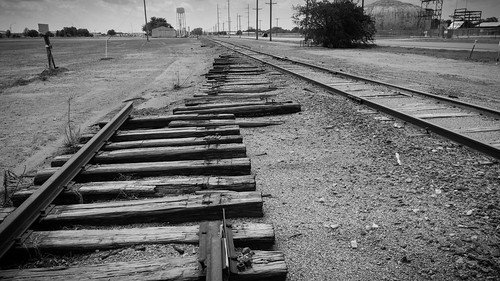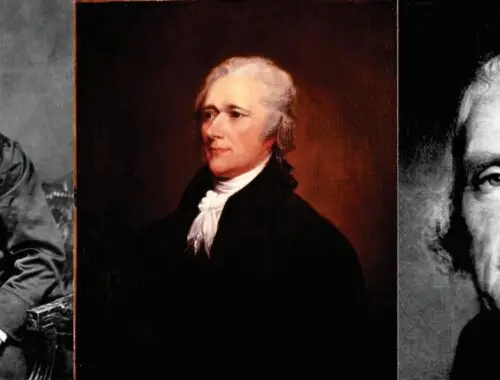
Part 1: Is Your Culture Like a Railroad or a Multi-modal Transportation System?

Figure 1 Railroad Tracks, the New Replaces the Old
There is a natural conflict between the new and the old. Sometimes, the new destroys the old and replaces it, as shown in Figure 1. At other times, the new embeds the old in a broader approach. An example is Euclidean vs. Non-Euclidean geometry. Euclidean geometry is what we learned in high school, based on flat planes. It works well for most practical applications. But for very large-scale applications it breaks down because we do not live on a plane. We live on a sphere and need to use Non-Euclidean Geometry, which violates the tenets of planer, Euclidean geometry. For instance, Euclidean geometry teaches there can be only one right angle in a triangle. But in spherical geometry, a triangle can have three right angles.
But the historian George Santayana warned us that “those who ignore history are doomed to repeat it”. So does this mean the past constrains the future, or the past informs the future? A culture’s answer to that question is critical. Another way to put it is, is your culture, like a railroad or a multi-modal system. In a railroad, the rails constrain the way you move—you can only move on the rails. In a multi-modal system, you can move by rail when it is optimal, or by sea, air, and road.
Theory below! Skim, if not interested in theory, but it provides research to support the key concepts.
The railroad model is like path dependency in political science. Path dependency theory originated in economics, but political science adopted it. The theory states that correlations between future actions and past events influence where an organization/institution can and will go. From an economic perspective, Stack and Gartland note, “The relative strength of this type of path-dependent analysis is in showing the dynamic evolution of an industry to a path of sub-optimality” (Stack, et al., 2003). Spruyt and others note the observation is equally relevant to political science, and path dependency is a recognized and accepted explanatory factor used in political science (Spruyt, 1994). It is a fundamental part of the historical institutionalism school, which is an integral part of this analysis and differs from a strict logical causal model.
Institutions—organizations, systems, and policies—find equilibrium points and stay there unless knocked off it. That is the essence of path dependency. The past shapes the future until a trigger event happens that creates a punctured equilibrium.
Punctuated-equilibrium theory seeks to explain a simple observation: Political processes are generally characterized by stability and incrementalism, but occasionally they produce large-scale departures from the past. Stasis, rather than crisis, typically characterizes most policy areas, but crises do occur. Large-scale changes in public policies are constantly occurring in one area or another of American politics and policymaking as public understandings of existing problems change. Important governmental programs are sometimes altered dramatically, even if most of the time they continue as they did in the previous year. While both stability and change are important elements of the policy process, most policy models have been designed to explain, or at least have been most successful at explaining, either the stability or the change. Punctuated-equilibrium theory encompasses both. (True et al., 2007)
When combined with path dependency theory, the two show that paths that provide desired outcomes are successful and reinforce path dependent lock in (Pierson, 2000). However, as Stack and Gartland observe, a once positive path can turn sub-optimal, yet be difficult to change because of lock-in. Exogenous events that create a punctuated equilibrium may be the only way to break this lock-in (Spruyt, 1994, p. 23). Researchers in the social sciences often link path dependency to historical institutionalism and cite it as a weakness of the school (Peters, et al., 2005). However, when the punctuated equilibrium effect is considered, the school allows for institutional change and provides an interesting model.
Punctuated equilibrium refers to events that can significantly alter a path and cause an actor to re-evaluate policy and actions. Spryut notes:
Change in institutions imposes costs, and hence social groups and political actors will be unwilling to experiment with new institutions unless a serious exogenous shock alters political alignments. Units will otherwise continue in the form they have taken at a particular historical juncture. Change will take the form of a punctuated equilibrium—a dramatic shift along several dimensions simultaneously in response to a powerful environmental change. (Spruyt, 1994 p. 7)
Bennet and Elman’s study of path dependency is especially relevant to the case at hand. They discuss using qualitative methods to address path dependencies (Bennett, et al., 2006) and a systematic set of case studies to determine path dependence. Since path dependency comes from economics and historical sociology, they note that there are different views and definitions. They highlight four key areas, however, that seem to be common: causal possibility, contingency, closure, and constraint. The first three areas allow for multiple potential paths organizations can pursue and provide for potential path changes. Constraints, however, tend to lock institutions into a specific path. This may be from increasing returns associated with the path or from norms and values that develop within the institution that favor the path. As noted by Hall and Taylor, norms and values are important in institutional analysis. This notion will be important as we apply path dependency theory to the case at hand.
End of Theory
Going back to the railroad model, a punctured equilibrium can happen when a disaster destroys part of the rail network or the railroad adds a new destination. In either case, the railroad needs to lay new track. Or a multi-model system could disrupt the entire system. Consider the port of Baltimore. It was once a critical port because it was on the Chesapeake Bay and cargo could come far inland before it needed the more expensive surface transportation. As surface transportation costs went down and surface transportation became faster, Norfolk grew and largely replaced Baltimore as a critical east coast port.
A punctured equilibrium ruptures the institution’s current equilibrium and forces it to change and find a new equilibrium. A trigger event that disrupts the current path creates the punctuated equilibrium that creates a new equilibrium, as shown Figure 2.

Figure 2 Breaking a Path and Setting a New Equilibrium
The punctuated equilibrium may reorder priorities, change activities and methods, or create new activities and methods. For example, in Figure 2, the truck delivery to a home changes to drone delivery. That is an enormous change that affects the transportation industry, airspace management, and many other related functions. What happens to UPS and FEDEX in this model? Do they transition to drone delivery, focus on deliveries that are not suitable for drones, do both, or go out of business? Will Amazon, who moved into surface delivery, dominate all delivery modes?
Figure 2 is an example of the Pathbreaking Conceptual Framework in action. Part 2 develops the framework and discusses its use.
As we move through the series, we will look at several key questions.
Do change agents deliberately create punctured equilibriums to stimulate change?
What about national security and war? How often does a specific situation or even global relationships hit an equilibrium through path dependency and then a punctuated equilibrium event strikes and changes the situation? Were operations in Afghanistan stuck in a path dependent equilibrium and the election of Biden a punctuated equilibrium event that broke the path?
Perhaps this approach can facilitate campaign planning and organizational strategy. What parts of the situation are path dependent and we need what kind of punctuating equilibrium event to break the path?
Do punctuated equilibrium events need to be black swans to break paths and engender change at the national or global levels, or can organizations and people engineer them?
References
Bennett, Andrew and Elman, Colin (2006). Complex Causal Relations and Case Study Methods: The Example of Path Dependence. Political Analysis, Vol. 14, No. 3, Special Issue on Causal Complexity and Qualitative Methods (Summer 2006). pp. 250-267.
Hall, Peter A. and Taylor, Rosemary C. R. (1996). Political Science and the Three New Institutionalisms. Political Studies Vol. 44. – pp. 952-973.
Peters, B. Guy, Pierre, Jon and King, Desmond S. (2005) The Politics of Path Dependency: Political Conflict in Historical Institutionalism. The Journal of Politics. pp. 1275-1300.
Spruyt, Hendrik (1994). The Sovereign State and its Competitors. Princeton: Princeton University Press.
Stack, Martin and Gartland Myles P (2003). Path Creation, Path Dependency, and Alternative Theories of the Firm. Journal of Economic Issues, Vol. 37, No. 2 (Jun., 2003). – 2003. – pp. 487-494.
True, J. L., Jones, B. D., & Baumgartner, F. R. (2007). Punctuated-Equilibrium Theory Explaining Stability and Change in Public Policymaking. In Theories of the policy process (Issue April, pp. 155–188).




